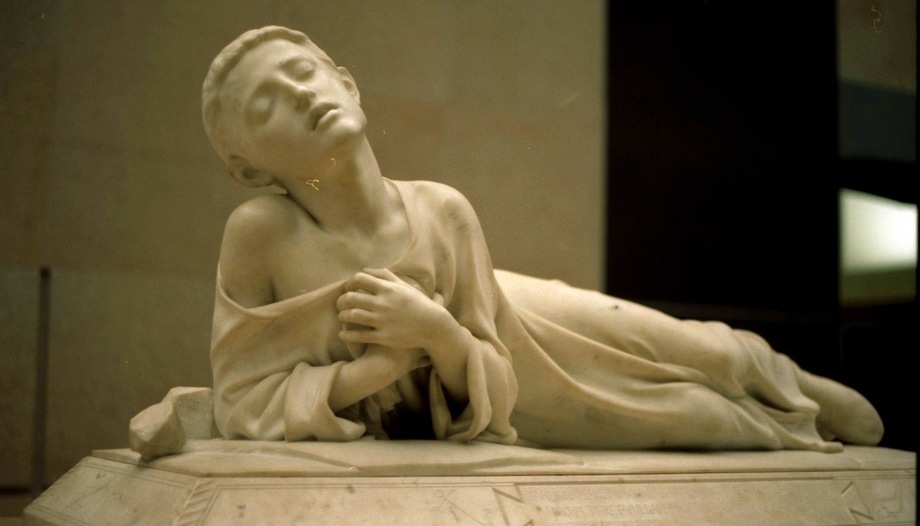As a child I was altar boy at school. When I was only nine or ten years old, I learned that there is no greater honor than to accompany the priest with the communion tray. Once we were told the story of St. Tarcisius: a Roman boy my age, also an altar boy, who had given his life to protect the Eucharist. Like him, I was to help the angels collect every last particle of Christ's body, so that not a single one would be lost!
When years later I went to live in Rome, I was very excited to know that I could finally visit the mortal remains of the saint of my childhood. Thanks to Wikipedia I learned that he had been buried in the Catacombs of St. Callixtus, a place I visited as soon as I had the opportunity. There I was able to read the tombstone that recalls his story: "Reader who reads these lines: it is good for you to remember that the merit of Tarcisius is very similar to that of the deacon St. Stephen, both of whom are honored by this epitaph. St. Stephen was killed under a storm of stones by the enemies of Christ, whom he exhorted to become better. Tarcisius, while carrying the sacrament of Christ, was surprised by the impious who tried to snatch his treasure in order to profane it. He preferred to die and be martyred, rather than give to rabid dogs the Eucharist containing the Divine Flesh of Christ".

An empty tomb
The inscription was beautiful, no doubt, but, to my great disappointment, the tomb was empty. After a quick search on the internet I learned that in the 8th century the saint had been transported to San Silvestro in Capite, where, theoretically, he had been resting ever since. I was surprised, as I had visited that church before. In any case, I returned with the hope that I had forgotten to visit one of the side chapels, where he would surely be found. What was my disappointment when I wandered around the church for fifteen minutes without finding a single sign indicating its presence. The parish priest, a kindly English priest, confirmed the worst: a few years ago, after a renovation, it had been removed from its place and no one knew where it had ended up. My joy in a well!
I recently shared my fruitless research with a friend. To my surprise, he had never heard of St. Tarcisius. Just hearing such a picturesque name brought a smile to his face. It is not easy to be familiar with a saint whose feast is celebrated on August 15, the Feast of the Assumption, and whose mortal remains, except for a few relics, seem to have disappeared from the map. I don't think good old Tarcisius cares too much about not being famous, since he will already be enjoying in heaven the mystery he adored on earth.
A novel about St. Tarcisius
However, although he doesn't mind, I can't say the same. And that's why I was so excited to recently come across a recently published novelette about his life, titled Tarsicius and the lions. This is one of those stories advertised for children, but which is really meant to be enjoyed by older children. In it, the author presents Tarsicio as a normal, funny and pious boy, who has a good time with his friends and finds it hard to forgive his pagan companions who make fun of his religion.
A Christian who lives his faith without complexes in the midst of an adverse environment, where receiving the Eucharist means taking a risk. In short, what my classmates and I aspired to when we were nine or ten years old, and our trembling trays followed the priest's hand during communion.
I may not have found the tomb of the saint of my childhood in Rome, but I am happy to know that, thanks to novels like this one, many children will continue to learn that there is no greater honor in this world than to accompany the Lord in the Eucharist.
TARSICIUS AND THE LIONS









